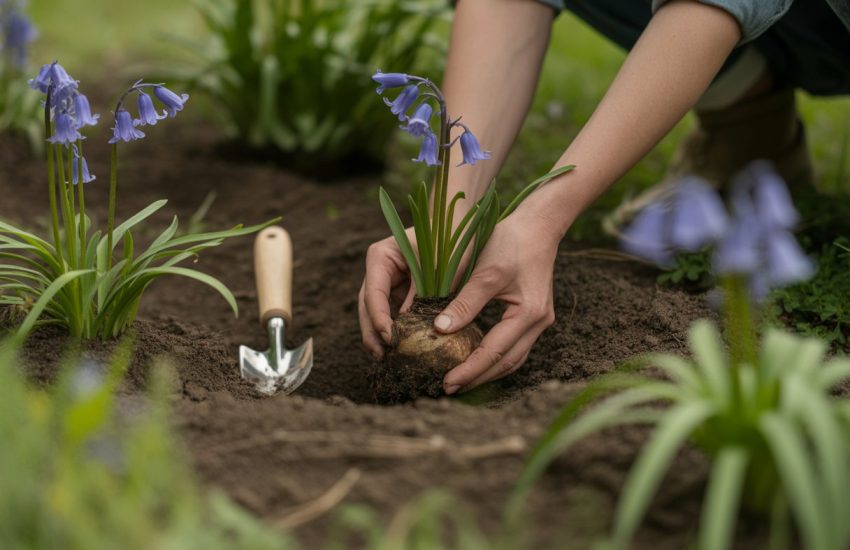How to Grow Ranunculus: A Comprehensive Guide
Ranunculus, also known as buttercup or Persian buttercup, is a popular flower among gardeners due to its vibrant colors and delicate petals. Growing ranunculus can be a rewarding experience for both novice and experienced gardeners alike. In this article, we will provide a comprehensive guide on how to grow ranunculus successfully.

Firstly, it is important to choose the right location for your ranunculus. These flowers thrive in well-drained soil that is rich in organic matter. They also require full sun to partial shade, making them an ideal addition to any garden or patio. When planting ranunculus, it is recommended to space them at least 6 inches apart to allow for proper growth and air circulation.
Secondly, selecting the right time to plant your ranunculus is crucial. These flowers are typically planted in the fall, around September or October, in preparation for their blooming season in the spring. It is important to note that ranunculus is sensitive to frost, so it is best to plant them after the last frost date in your area. With proper planting and care, your ranunculus will bloom in a variety of colors, including pink, red, yellow, and white, adding a touch of elegance to your garden.
Understanding Ranunculus
Ranunculus is a genus of flowering plants that belong to the family Ranunculaceae. These plants are known for their beautiful, brightly colored blooms that resemble roses, peonies, and anemones. Ranunculus is a popular choice for gardeners and florists alike due to their vibrant colors and long vase life.
Species and Varieties
There are over 600 species of Ranunculus, with the most common species being Ranunculus asiaticus. This species is native to the eastern Mediterranean region and is commonly referred to as the Persian Buttercup. Ranunculus asiaticus is known for its large, showy blooms that come in a wide range of colors including red, pink, yellow, and white.
In addition to Ranunculus asiaticus, there are several other popular varieties of Ranunculus, including Ranunculus aconitifolius, Ranunculus ficaria, and Ranunculus repens. Each of these varieties has its own unique characteristics and growing requirements.
Annual vs Perennial Ranunculus
Ranunculus can be either annual or perennial, depending on the species and variety. Annual Ranunculus plants complete their life cycle in one growing season, while perennial Ranunculus plants can live for multiple years.
Ranunculus asiaticus is typically grown as an annual in most regions, although it can be grown as a perennial in areas with mild winters. Perennial Ranunculus varieties, such as Ranunculus repens, can be grown as groundcovers or in rock gardens.
When selecting Ranunculus plants, it’s important to consider the growing requirements of the specific species or variety. Some Ranunculus plants prefer full sun, while others prefer partial shade. Additionally, some varieties prefer moist soil, while others prefer well-draining soil.
By understanding the different species and varieties of Ranunculus, as well as their growing requirements, gardeners can successfully grow these beautiful plants in their own gardens.
Pre-Planting Care
Choosing the Right Corms
Before planting ranunculus, it is important to choose the right corms. Look for large, healthy corms that are firm to the touch and free from any signs of disease or damage. Avoid corms that are soft, shriveled, or have mold on them. It is also recommended to purchase corms from a reputable supplier to ensure quality.
Soil Preparation
Ranunculus plants prefer well-drained soil that is rich in organic matter. To prepare the soil for planting, first remove any weeds or debris from the area. Then, mix in compost or well-rotted manure to improve soil fertility and structure. It is also important to ensure that the soil is well-drained to prevent waterlogging, which can lead to root rot.
Corm Soaking
Soaking the corms before planting can help to speed up the germination process and encourage strong root growth. To do this, place the corms in a bowl of lukewarm water for 12-24 hours. Be careful not to soak them for too long, as this can cause them to rot. After soaking, remove the corms from the water and allow them to dry for a few hours before planting.
By following these pre-planting care tips, gardeners can ensure that their ranunculus plants have the best possible start to their growing season.
Planting and Growing

When to Plant
Ranunculus can be planted in both spring and fall, depending on the climate. In areas with mild winters, fall planting is recommended, while in colder regions, spring planting is better. Planting should be done when the soil temperature is around 50°F (10°C) and the danger of frost has passed.
Where to Plant
Ranunculus prefers full sun and well-drained soil. It is important to choose a location that receives at least 6 hours of direct sunlight per day. If the soil is waterlogged, the bulbs may rot, so make sure the soil has good drainage. Ranunculus can be grown in containers as well, as long as the containers have drainage holes.
Planting Depth and Spacing
Ranunculus bulbs should be planted about 2 inches deep and 4-6 inches apart. The pointed end of the bulb should be facing down. If planting in containers, make sure the bulbs are not too close to the edges, as they may dry out faster.
It is important to water the bulbs immediately after planting and keep the soil moist but not waterlogged. Once the shoots emerge, reduce watering to prevent rotting.
By following these simple steps, anyone can grow beautiful ranunculus with ease.
Ongoing Care and Maintenance

Watering Requirements
Ranunculus plants require regular watering to keep the soil moist. They prefer well-draining soil that does not retain too much water. Overwatering can lead to root rot and other diseases. It is recommended to water the plants deeply once a week. However, during hot and dry weather, they may require more frequent watering. It is important to avoid getting water on the leaves as this can lead to fungal diseases.
Fertilizing and Mulching
Fertilizing is important for the healthy growth of ranunculus plants. It is recommended to fertilize the plants with a balanced fertilizer once a month during the growing season. Mulching can help retain moisture in the soil and also prevent weed growth. Organic mulches such as compost, straw, or shredded leaves can be used.
Dealing with Pests and Diseases
Ranunculus plants are susceptible to a few pests and diseases. Aphids, spider mites, and thrips can be a problem. Regularly inspecting the plants for signs of pests and using insecticidal soap can help control the infestation. Fungal diseases such as powdery mildew and botrytis can also be a problem. It is important to avoid overhead watering and to remove any infected leaves immediately. Fungicides can also be used to control the spread of the disease.
Overall, with proper care and maintenance, ranunculus plants can provide beautiful blooms for your garden or home.
Harvesting and Post-Care

Cutting and Arranging
When it comes to cutting ranunculus, it is important to wait until the flowers have fully opened. This will ensure that the blooms have reached their maximum size and will have a longer vase life. Using sharp, clean scissors or shears, cut the stem at a 45-degree angle, about 1 inch above the soil level. To encourage further blooming, it is recommended to leave at least 2-3 healthy leaves on the stem.
Ranunculus make beautiful cut flowers and are perfect for bouquets. To create a stunning arrangement, mix and match different colors and sizes of blooms. Remove any foliage that will be below the water line in the vase to prevent bacterial growth. Change the water every 2-3 days and re-cut the stems at an angle to ensure that they can continue to absorb water.
Post-Bloom Care
After the ranunculus has finished blooming, it is important to deadhead the spent flowers. This will encourage the plant to put its energy into producing new blooms instead of setting seed. To deadhead, simply cut the stem above the spent flower.
To keep the plant healthy and encourage further blooming, it is important to fertilize regularly during the growing season. Use a balanced, water-soluble fertilizer every 2-3 weeks.
Preparing for Dormancy
As the growing season comes to an end, ranunculus will naturally go dormant. To prepare for dormancy, stop fertilizing and reduce watering. Once the foliage has turned yellow and died back, it is safe to dig up the bulbs. Clean off any excess soil and store the bulbs in a cool, dry place until it is time to plant them again in the spring.
By following these simple post-care steps, you can enjoy the beauty of ranunculus both in the garden and in your home as cut flowers.
Frequently Asked Questions

What is the best method for planting ranunculus corms in containers?
The best method for planting ranunculus corms in containers is to fill the container with well-draining soil mix and plant the corms about 2-3 inches deep. Make sure to keep the soil moist, but not waterlogged, as ranunculus prefers moist soil. Place the container in a location with full or partial sunlight, and protect the plant from strong winds.
Can you provide tips for successfully growing ranunculus indoors?
To successfully grow ranunculus indoors, choose a well-lit location with indirect sunlight. Plant the corms in a well-draining soil mix, and water the plant regularly to keep the soil moist. Make sure to provide good air circulation to prevent fungal diseases. Once the plant has bloomed, remove the spent flowers to promote new growth.
What are the key steps to grow ranunculus from seed effectively?
To grow ranunculus from seed effectively, start by soaking the seeds in water for 24 hours before planting. Sow the seeds in well-draining soil mix, and keep the soil moist but not waterlogged. Place the container in full or partial sunlight, and protect the plant from strong winds. Once the plant has grown to about 3-4 inches tall, transplant it to a larger container or in the ground.
How do you ensure ranunculus thrives in USDA Zone 6?
To ensure ranunculus thrives in USDA Zone 6, plant the corms in well-draining soil mix with a pH between 6.0 and 7.0. Water the plant regularly to keep the soil moist, and provide good air circulation to prevent fungal diseases. Protect the plant from strong winds, and provide it with full or partial sunlight.
What care is required to help ranunculus bulbs multiply and bloom annually?
To help ranunculus bulbs multiply and bloom annually, fertilize the plant with a balanced fertilizer every two weeks during the growing season. Remove spent flowers to promote new growth, and cut back the foliage once it has turned yellow. Mulch the soil around the plant to help retain moisture and protect the corms during the winter.
When is the optimal time to plant ranunculus bulbs in Zone 7?
The optimal time to plant ranunculus bulbs in Zone 7 is in the fall, about 4-6 weeks before the first expected frost. Plant the corms about 2-3 inches deep in well-draining soil mix, and water the plant regularly to keep the soil moist. Provide the plant with full or partial sunlight, and protect it from strong winds.


